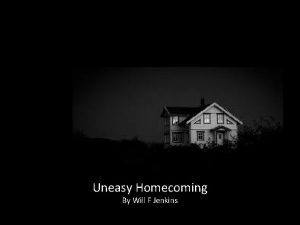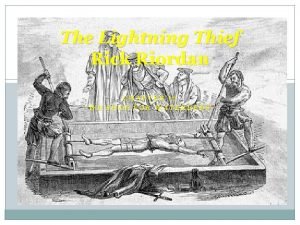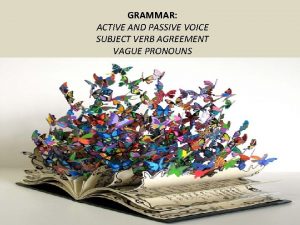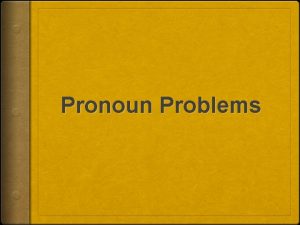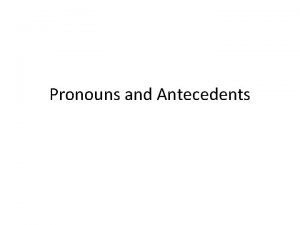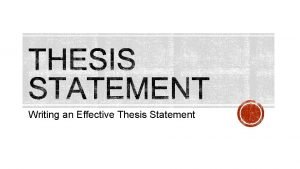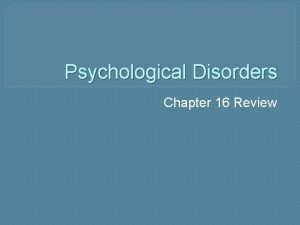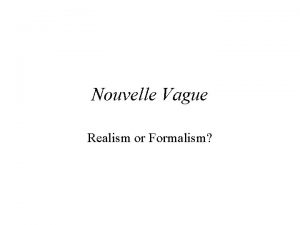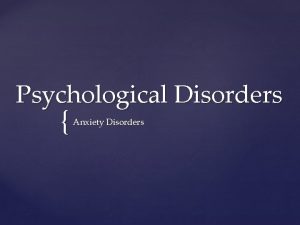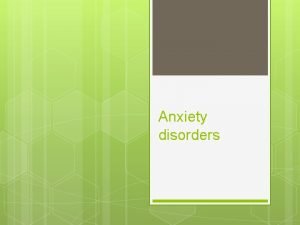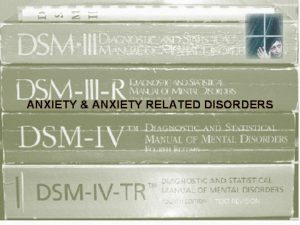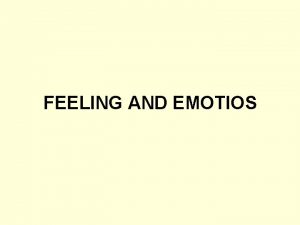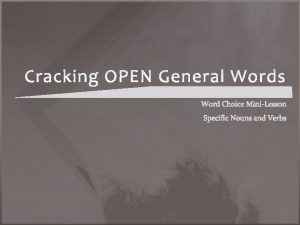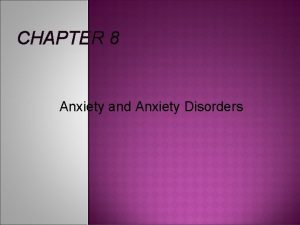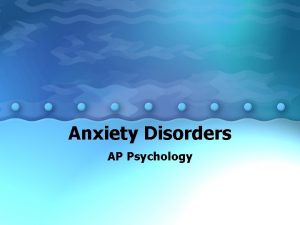Anxiety Vague uneasy emotional feeling experienced in response











- Slides: 11

Anxiety Vague, uneasy emotional feeling experienced in response to perceived threat of danger

ANXIETY AS A SYMPTOM • Free-floating anxiety • Thoughts, feelings, behaviors • Automatic relief behaviors • Unrelieved – over time > disorder

ANXIETY DISORDERS • Uncontrolled, overwhelming anxiety • Impaired functioning – Personal – Social – Work

PANIC DISORDER • Panic attack – Rapid heartbeat – Increased perspiration – Chilling/flushing – Numbness of hands – Nausea – Feeling of suffocation – Chest pain, fear of having heart attack – Fear of being out of control

AGORAPHOBIA • Avoid places or situations that trigger panic attack • Restrict activities to avoid recurrence of symptoms • Often homebound or restricted to home environment

PHOBIAS • Specific Phobia – Irrational, persistent fear of object or situation – Anxiety with contact • Social Phobia – Excessive fear of social situations in which embarrassment is possible – Discomfort being watched or at risk of being judged by others – Anticipatory anxiety

OBSESSIVE-COMPULSIVE DISORDER • Obsession – Recurrent, persistent, unwanted thoughts or images causing intense anxiety • Compulsion – Repetitive behavior engaged in to reduce high level of anxiety

POSTTRAUMATIC STRESS DISORDER (PTSD) • Response to situation involving actual death or threat of injury • Intense feeling or fear following event • Mental reruns of event • Emotional numbness • Avoidance of people and places associated with event • Insomnia, irritability, hypervigilance

GENERALIZED ANXIETY DISORDER • Chronic worry/anxiety • Negative self-talk • Fatigue • Difficulty falling/staying asleep • Tension • Anticipating the “worst” • Irritability, headaches, tremors • Physical symptoms

NURSING PROCESS APPLIED • Assessment – Take steps to lower anxiety level – Encourage trust/calm approach – Current feelings – What happened immediately prior to onset – Client’s perspective of situation – Thought processes – Affect, expression, nonverbal behaviors – Communication ability, thought blocking

NURSING PROCESS APPLIED • Nursing diagnoses • Expected outcomes • Interventions • Evaluation
 Uneasy homecoming by will f jenkins
Uneasy homecoming by will f jenkins Summary of chapter 17 percy jackson
Summary of chapter 17 percy jackson Natural and forced response
Natural and forced response Natural response circuit
Natural response circuit A subsequent
A subsequent Faulty pronoun
Faulty pronoun Vague pronoun examples
Vague pronoun examples Pronoun problems practice
Pronoun problems practice Whats a pronoun
Whats a pronoun Example of a thesis statement
Example of a thesis statement Is a reaction to vague or imagined dangers
Is a reaction to vague or imagined dangers Nouvelle vague definition
Nouvelle vague definition
